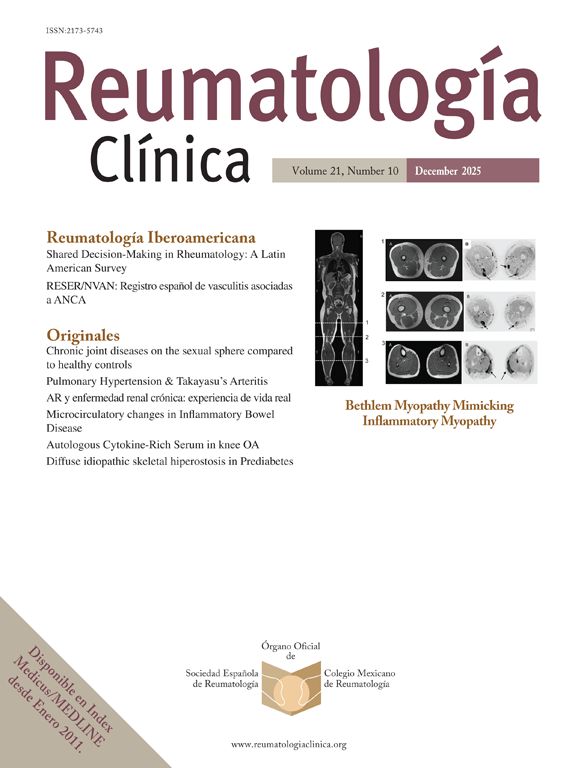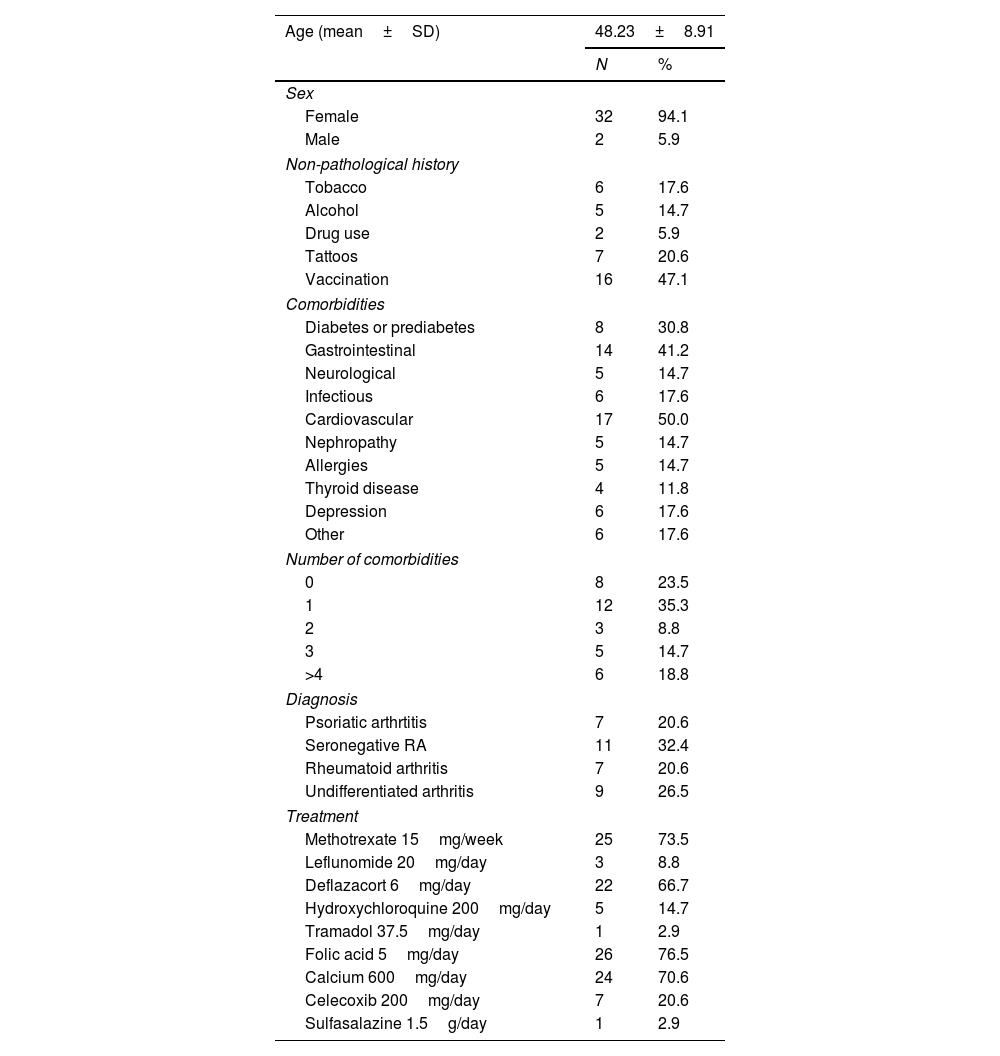Rheumatoid arthritis (RA) is a chronic inflammatory disease that requires continuous monitoring to optimize treatment outcomes and prevent long-term disability. Telemedicine has emerged as a promising strategy to improve access and continuity of care. This study aimed to evaluate the use of telemedicine as a follow-up tool in patients with newly diagnosed RA.
Material and methodsWe conducted a prospective, observational study in patients with recent-onset RA recruited from an early arthritis detection program between May and November 2023. Following baseline in-person evaluation, patients were enrolled in a telemonitoring protocol consisting of two scheduled video consultations at 6 and 12 months. Clinical outcomes were assessed at each visit using the Health Assessment Questionnaire (HAQ), the Clinical Disease Activity Index (CDAI), and patient-reported joint counts.
ResultsA total of 34 patients were included (94.1% female, mean age 48.2±8.9 years). At 6 and 12 months, 88.2% and 73.5% of patients completed their respective teleconsultations. Statistically significant improvements were observed in all clinical parameters: HAQ scores decreased from 0.87 to 0.50, CDAI from 23.5 to 12.0, TJC decreased from 10.5 to 3.4, SJC from 1.48 to 1.15, and EVA from 5.7 to 3.69.
Discussion and conclusionTelemedicine proved to be an effective follow-up strategy for patients with newly diagnosed RA, showing significant improvements in functional status, pain, and disease activity over time. This approach may represent a valuable complement to in-person care in early RA management.
La artritis reumatoide (AR) requiere un seguimiento continuo para optimizar los resultados del tratamiento y prevenir la discapacidad a largo plazo. La telemedicina es una estrategia prometedora para mejorar el acceso y la continuidad de atención. El objetivo de este estudio fue evaluar el uso de la telemedicina como herramienta de seguimiento en los pacientes con diagnóstico reciente de AR.
Material y métodosSe realizó un estudio prospectivo, observacional en los pacientes con AR de reciente inicio, reclutados de un programa de detección temprana entre mayo y noviembre de 2023. Tras una evaluación presencial basal, los pacientes fueron incluidos en un protocolo de telemonitorización que consistió en 2 videollamadas a los 6 y 12 meses. En cada consulta se evaluaron desenlaces clínicos mediante el cuestionario de evaluación de la salud (HAQ), el índice de actividad clínica de la enfermedad (CDAI) y los recuentos articulares autorreportados por los pacientes.
ResultadosSe incluyeron 34 pacientes (94,1% mujeres, media 48,2±8,9 años). A los 6 y 12 meses, el 88,2 y 73,5% de los pacientes, respectivamente, completaron sus teleconsultas. Se observaron mejorías estadísticamente significativas en todos los parámetros clínicos: los puntajes de HAQ disminuyeron de 0,87 a 0,50, CDAI de 23,5 a 12,0, NAD de 10,5 a 3,4, NAI de 1,48 a 1,15 y EVA de 5,7 a 3,69.
Discusión y conclusiónLa telemedicina demostró ser una estrategia efectiva en los pacientes con diagnóstico reciente de AR, mostrando mejorías significativas en la funcionalidad, el dolor y la actividad de la enfermedad a lo largo del tiempo. Este enfoque podría representar un complemento a la atención presencial.











